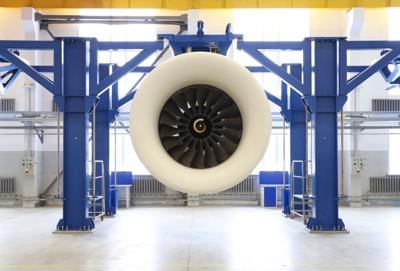Mon, Nov 01, 2021
Simulated Flight Through Volcanic Ash is Undeterred
Russian aviation manufacturer Rostec announced an unorthodox test outcome this week for their newest PD-14 aircraft engine. The first modern turbofan engine created by the company, the project is key to upcoming aircraft in Russian service. Using volcanic ash from the Kamchatka volcano Shiveluch, the company said the engine continued to function under simulated cloud environments, usually a death sentence for turbine engines.

Though a worst-case hypothetical scenario, it’s not entirely impossible for an aircraft to be subjected to ash cloud ejections from a volcanic eruption or similarly dense particulates in the air. Testing the functionality of an aircraft engine in such conditions is less an earnest developmental goal, and more an unorthodox way of testing how fault-tolerant and reliable a turbine engine is off of the ground stand, in the real, unforgiving world.
The tests were completed at the Central Institute of Aviation Motors as part of the PD-14’s type certificate for EASA evaluation. The gas generator section was the primary focus of the testing procedures. Completion of the evaluation has allowed specialists from UEC-Aviadvigatel to develop recommendations for maintenance and flight operation for aircraft equipped with PD-14 engines in case of passing through clouds of ash or choking dust storms.
“For the first time in the history of Russian engine building, Rostec State Corporation had a gas generator of an aircraft engine tested under the conditions of volcanic ash. The newest PD-14 engine for medium-haul airliners successfully passed the test with ash from Kamchatka volcano Shiveluch - the thrust of the power plant, which had been in this aggressive environment for an hour, practically did not decrease. After disassembly, the specialists of the Perm Design Bureau did not find any undesirable consequences for the product, and that confirms the safety of operation when flying through a dust storm or an ash cloud,” said Anatoly Serdyukov, Industrial Director of Rostec State Corporation Aviation Cluster.
More News
Pilot Applied Full Aft Stick And Nose-Up Trim, But The Airplane Remained On The Runway Analysis: The pilot reported that a preflight inspection and flight control checks revealed n>[...]
A Few Questions AND Answers To Help You Get MORE Out of ANN! 1) I forgot my password. How do I find it? 1) Easy... click here and give us your e-mail address--we'll send it to you >[...]
From 2022 (YouTube Edition): Before They’re All Gone... Humankind has been messing about in airplanes for almost 120-years. In that time, thousands of aircraft representing i>[...]
Advanced Air Mobility (AAM) A transportation system that transports people and property by air between two points in the NAS using aircraft with advanced technologies, including el>[...]
Aero Linx: MQ-1B Predator The MQ-1B Predator is an armed, multi-mission, medium-altitude, long-endurance remotely piloted aircraft that is employed primarily as an intelligence-col>[...]
 NTSB Final Report: Douglas A-4K
NTSB Final Report: Douglas A-4K ANN FAQ: Q&A 101
ANN FAQ: Q&A 101 Classic Aero-TV: PBY Catalina--From Wartime to Double Sunrise to the Long Sunset
Classic Aero-TV: PBY Catalina--From Wartime to Double Sunrise to the Long Sunset ANN's Daily Aero-Term (07.01.25): Advanced Air Mobility (AAM)
ANN's Daily Aero-Term (07.01.25): Advanced Air Mobility (AAM) ANN's Daily Aero-Linx (07.01.25)
ANN's Daily Aero-Linx (07.01.25)



